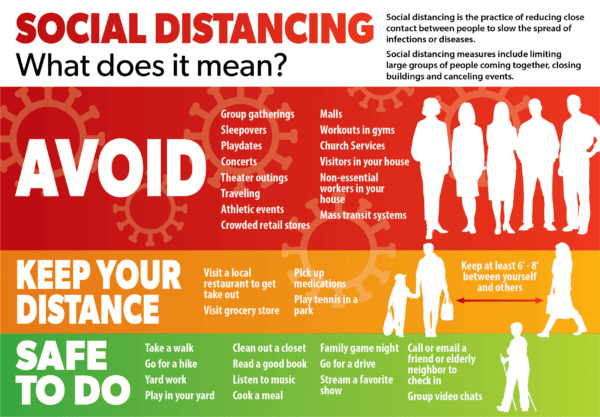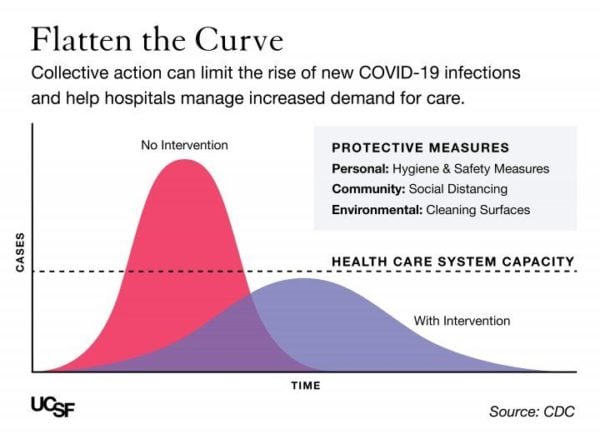Coronavirus
A family of viruses that cause illness ranging from the common cold to more severe diseases, such as Middle East Respiratory Syndrome (MERS-CoV) and Severe Acute Respiratory Syndrome (SARS-CoV). The novel coronavirus recently discovered has been named SARS-CoV-2 and it causes COVID-19.
COVID-19
The name of the disease caused by the novel coronavirus, SARS-CoV-2, and is short for “Coronavirus Disease 2019”.
SARS-CoV-2
The name of the novel coronavirus that causes COVID-19 disease.
Exposure
The state of being exposed to a germ or pathogen.
Symptomatic
refers to having symptoms. With COVID-19, these include a fever, dry cough and shortness of breath.
Asymptomatic
refers to someone who is infected with the COVID-19, but does not have any or all symptoms, which means that one could be infected, not know it, and be able to spread the virus to others.
Epidemic
An increase, often sudden, in the number of cases of a disease above what is normally expected in that population in that area.
Pandemic
An epidemic that has spread over several countries/continents, usually affecting a large number of people.
Incubation period
This refers to the interval between infection by a pathogen, i.e. SARS-CoV-2, and the manifestation or onset of the illness, i.e. those symptoms associated with COVID-19: dry cough, fever, and shortness of breath.

https://www.orangecountync.gov/2358/Social-distancing
Social distancing
A public health practice that aims to prevent sick people from coming in close contact with healthy people in order to reduce opportunities for disease transmission. The goal of social distancing right now is to slow down the outbreak.
To practice social distancing: avoid public transportation, avoid nonessential travel, work from home, avoid social gatherings, Stay at home as much as possible and when out, minimize contact with people and maintaining a distance of at least 6 feet between you and others.
Quarantine
People who have been exposed or potentially exposed to the virus but who have not tested positive and do not have symptoms may go into a quarantine to stay away from others for a period of time until it is clear they do not have the virus.
Isolation or self-isolating
Refers to cutting oneself off from the rest of the community. With respect to COVID-19, it means staying put in one’s home if they have symptoms, have been exposed, or have tested positive for SARS-CoV-2.
NOTE: Isolation should NOT imply isolating oneself virtually (online) or socially or distancing oneself from health care or other tangible or social-emotional forms of assistance.
Shelter in Place or Stay at Home Order
Orders such as New York State on PAUSE: All residents must remain at their place of residence, except to conduct essential activities, essential businesses, and essential government functions. You are typically allowed to go outside for essentials — to pick up groceries or prescriptions — but you should limit those trips to no more than once a week if possible. People with essential jobs — public safety, medical, sanitation or grocery worker — can still go to work. And you can visit someone if you are their caregiver. In most cases, a shelter-in-place order allows you to walk the dog or exercise outside (for brief periods) as long as you keep a six-foot distance from others.
Flattening the curve
This means that the rate of infections will slow, reducing dangerously high peaks in infections, prolonging the outbreak, but sparing a burdened health care system. “Flattening the curve” is the goal of social distancing measures.




